This article is about the municipality in India. For its namesake district, see Shimla district.
"Simla" redirects here. For other uses, see Simla (disambiguation).
| Shimla | |
|---|---|
| City | |

Clockwise from top: Skyline at Shimla Southern Side, Rashtrapati Niwas, Town hall, Night view of Shimla and Christ Church.
| |
| Nickname(s): Queen of Hills | |
| Coordinates: 31°6′12″N 77°10′20″ECoordinates: 31°6′12″N 77°10′20″E | |
| Country | |
| State | Himachal Pradesh |
| District | Shimla |
| Named for | Hindu goddess Shyamala Devi[1] |
| Government | |
| • Municipal Commissioner | Pankaj Rai[2] |
| • Mayor | Sanjay Chauhan[2](CPI(M)) |
| Area | |
| • Total | 25 km2 (10 sq mi) |
| Area rank | 1st |
| Elevation | 2,205 m (7,234 ft) |
| Population (2011)[3] | |
| • Total | 171,817 |
| • Rank | 1 (in HP) |
| • Density | 6,900/km2(18,000/sq mi) |
| Languages | |
| • Official | Hindi |
| Time zone | IST (UTC+5:30) |
| PIN | 171 001 |
| Telephone code | 91 177 XXX XXXX |
| ISO 3166 code | ISO 3166-2 |
| Vehicle registration | HP-03, HP-51, HP-52 |
| Climate | Cwb (Köppen) |
| Precipitation | 1,577 mm (62 in) |
| Avg. annual temperature | 13 °C (55 °F) |
| Avg. summer temperature | 18 °C (64 °F) |
| Avg. winter temperature | 5 °C (41 °F) |
| Website | hpshimla |
Shimla in British Indian orthography, Simla, is the capital city of the Indian state ofHimachal Pradesh, located in northern India. Shimla acts as a hub for India's tourism sector.
In 1864, Shimla was officially designated the summer capital of British India, succeeding Murree, northeast ofRawalpindi. After independence, Lahore was given to Pakistan and Shimla became the capital of Punjab and was later the capital of Himachal Pradesh.
After reorganisation, the Mahasu district and its major portion was merged with Shimla. Its name is derived from the goddess Shyamala Devi, an incarnation of the Hindu goddess Kali. Shimla historically contained the 19 hill states ofBaghal, Baghat, Balsan, Bashahr, Bhajji, Bija, Darkoti, Dhami, Jubal, Keonthal, Kumharsain, Kunihar, Kuthar,Mahlog, Mangal, Nalagarh (Hindur), Sangri and Tharoch.
Shimla is home to a number of colleges and research institutions as well as multiple temples and palaces. The city's buildings are styled in the Tudorbethan and neo-Gothic architectures dating from the colonial era.
Owing to its steep terrain, Shimla hosts the mountain biking race MTB Himalaya, which started in 2005 and is regarded as the biggest event of its kind in South Asia.
The vast majority of the area occupied by the present-day Shimla city was dense forest during the 18th century. The only civilization consisted of the Jakhoo temple and a few scattered houses.[4] The area was called 'Shimla', named after a Hindu goddess, Shyamala Devi, an incarnation of Goddess Kali.[1]
The area of present-day Shimla was ruled by Bhimsen Thapa of Nepalin 1806. The British East India Company took control of the territory as per the Sugauli Treaty after the Anglo-Nepalese War (1814–16). In a diary entry dated 30 August 1817, the Gerard brothers, who surveyed the area, describe Shimla as "a middling-sized village where a fakir is situated to give water to the travellers". In 1819, Lieutenant Ross, the Assistant Political Agent in the Hill States, set up a wood cottage in Shimla. Three years later, his successor and the Scottish civil servantCharles Pratt Kennedy built the first pucca house in the area, near what is now the Himachal Pradesh Legislative Assembly building. The accounts of the England-like climate started attracting several British officers to the area during the hot Indian summers. By 1826, some officers had started spending their entire vacation in Shimla. In 1827, Lord Amherst, the Governor-General of Bengal, visited Shimla and stayed in the Kennedy House. A year later, Lord Combermere, the Commander-in-Chief of the British forces in India, stayed at the same residence. During his stay, a three-mile road and a bridge was constructed near Jakhu. In 1830, the British acquired the surrounding land from the chiefs of Keonthal and Patiala in exchange for the Rawin pargana and a portion of the Bharauli pargana. The settlement grew rapidly after this, from 30 houses in 1830 to 1,141 houses in 1881.[4]
In 1832, Shimla saw its first political meeting: between the Governor-General William Bentinck and the emissaries ofMaharaja Ranjit Singh. In a letter to Colonel Churchill, he wrote:[5]
| “ | Shimla is only four days march from Loodianah (Ludhiana), is easy of access, and proves a very agreeable refuge from the burning plains of Hindoostaun (Hindustan). | ” |
Combermere's successor Earl Dalhousie visited Shimla in the same year. After this, the town saw regular visits from the Governor Generals and Commanders-in-Chief of British India. A number of young British officers started visiting the area to socialize with the higher-ups; they were followed by ladies looking for marriage alliances for their relatives. Shimla thus became a hill station famous for balls, parties and other festivities. Subsequently, residential schools for students from upper-class families were established nearby. By the late 1830s, the city also became a centre for theatre and art exhibitions. As the population increased, a number of bungalows were built and a big bazaar was established in the town. The Indian businessmen, mainly from Sood and Parsi communities, arrived in the area to cater to the needs of the growing European population. On 9 September 1844 the foundation of the Christ Church was laid. Subsequently, several roads were widened and the construction of the Hindustan-Tibet road with a 560-feet tunnel was taken up in 1851-52. This tunnel, now known as the Dhalli Tunnel, was started by a Major Briggs in 1850 and completed in the winter of 1851-52.[6] The 1857 uprising cause a panic among the European residents of the town, but Shimla remained largely unaffected by the rebellion.[4]
In 1863, the Viceroy of India John Lawrence decided to shift the summer capital of the British Raj to Shimla.[4] He took the trouble of moving the administration twice a year between Calcutta and this separate centre over 1,000 miles away, despite the fact that it was difficult to reach.[7] Lord Lytton (Viceroy of India 1876–1880) made efforts to plan the town from 1876, when he first stayed in a rented house, but began plans for a Viceregal Lodge, later built on Observatory Hill. A fire cleared much of the area where the native Indian population lived (the "Upper Bazaar" nowadays known as The Ridge[8]), and the planning of the eastern end to become the centre of the European town forced these to live in the Middle and Lower Bazaars on the lower terraces descending the steep slopes from the Ridge. The Upper Bazaar was cleared for a Town Hall, with many facilities such as library and theatre, as well as offices—for police and military volunteers as well as municipal administration.
During the "Hot Weather", Shimla was also the Headquarters of the Commander-in-Chief, India, the head of theIndian Army, and many Departments of the Government. The summer capital of the regional Government of thePunjab moved from Murree, in modern-day Pakistan, to Shimla in 1876. They were joined by many of the British wives and daughters of the men who remained on the plains. Together these formed Shimla Society, which, according to Charles Allen,[9] "was as close as British India ever came to having an upper crust." This may have been helped by the fact that it was very expensive, having an ideal climate and thus being desirable, as well as having limited accommodation. British soldiers, merchants, and civil servants moved here each year to escape from the heat during summer in the Indo-Gangetic plain. The presence of many bachelors and unattached men, as well as the many women passing the hot weather there, gave Shimla a reputation for adultery, and at least gossip about adultery: as Rudyard Kipling said in a letter cited by Allen, it had a reputation for "frivolity, gossip and intrigue". (See also.[10])
The 500 feet (150 m) Lower Bazaar tunnel was built in 1905 and christened Khachhar Surang. The Elysium tunnel (now known as the Auckland Tunnel), about 120 feet (37 m) in length was also built in 1905.[6]
The Kalka-Shimla railway line, constructed in 1906, added to Shimla's accessibility and popularity. The railway route from Kalka to Shimla, with more than 806 bridges and 103 tunnels, was touted as an engineering feat and came to be known as the "British Jewel of the Orient".[10] In 2008, it became part of the UNESCO World Heritage Site, Mountain railways of India.[11] There was a significant Muslimpopulation in the region before the partition of British India. In addition, Shimla was the capital of the undivided state of Punjab in 1871, and remained so until the construction of the new city of Chandigarh (the present-day capital of the Indian states of Punjab and Haryana)[dubious ] Upon the formation of the state ofHimachal Pradesh in 1971, Shimla was named its capital.
After independence the Chief Commissioner's Province of H.P. came into being on 15 April 1948 as a result of integration of 28 petty princely states (including feudatory princes and zaildars) in the promontories of the western Himalaya, known in full as the Shimla Hills States & four Punjab southern hill States by issue of the Himachal Pradesh (Administration) Order, 1948 under Sections 3 & 4 of the Extra-Provincial Jurisdiction Act, 1947 (later renamed as the Foreign Jurisdiction Act, 1947 vide A.O. of 1950). The State of Bilaspur was merged in the Himachal Pradesh on 1 April 1954 by the Himachal Pradesh and Bilaspur (New State) Act, 1954. Himachal became a part C state on 26 January 1950 with the implementation of theConstitution of India and the Lt. Governor was appointed. Legislative Assembly was elected in 1952. Himachal Pradesh became a Union Territory on 1 November 1956.[12] Following area of Punjab State namely Shimla, Kangra, Kulu and Lahul and Spiti Districts, Nalagarh tehsil of Ambala District, Lohara, Amb and Una kanungo circles, some area of Santokhgarh kanungo circle and some other specified area of Una tehsil of Hoshiarpur District besides some parts of Dhar Kalan Tehsil of Pathankot District; were merged with Himachal Pradesh on 1 November 1966 on enactment of Punjab Reorganisation Act, 1966 by the Parliament. On 18 December 1970, the State of Himachal Pradesh Act was passed by Parliament and the new state came into being on 25 January 1971. Thus Himachal emerged as the eighteenth state of the Indian Union.[12]
Pre-independence structures still dot Shimla; buildings such as the former Viceregal Lodge, Auckland House, Christ Church, Gorton Castle, Shimla Town Hall and The Gaiety Theatre are reminders of British rule in India.[13][14] The original Peterhoff, another Viceregal residence, burned down in 1981. British Shimla extended about a mile and a half along the ridge between Jakhoo Hill and Prospect Hill. The central spine was The Mall, which ran along the length of the ridge, with a Mall Extension southwards, closed to all carriages except those of the Viceroy and his wife.
Geography
Shimla lies in the south-western ranges of the Himalayas at 31.61°N 77.10°E. It has an average altitude of 2,206 metres (7,238 ft) above mean sea level and extends along a ridge with seven spurs. The city stretches nearly 9.2 kilometres (5.7 mi) from east to west.[15] Shimla was built on top of seven hills namely: Inverarm Hill, Observatory Hill, Prospect Hill, Summer Hill, Bantony Hill, Elysium Hill and Jakhoo Hill. The highest point is Jakhoo hill at 2,454 metres (8,051 ft). The city is a Zone IV (High Damage Risk Zone) per the Earthquake hazard zoning of India. Weak construction techniques and an increasing population pose a serious threat to the already earthquake prone region.[16][17] There are no bodies of water near the main city and the closest river, the Sutlej, is about 21 km (13 mi) away.[18] Other rivers that flow through the Shimla district, although further from the city, are the Giri, and Pabbar (both tributaries of Yamuna). The green belt in the Shimla planning area is spread over 414 hectares (1,020 acres).[10] The main forests in and around the city are of pine, deodar, oak and rhododendron.[19] Environmental degradation due to the increasing number of tourists every year without the infrastructure to support them has resulted in Shimla losing its popular appeal as an ecotourism spot.[20] Another rising concern in the region are the frequent number of landslidesthat often take place after heavy rains.[16][21]
Climate
Shimla features a subtropical highland climate (Cwb) under the Köppen climate classification. The climate in Shimla is predominantly cool during winters, and moderately warm during summer. Temperatures typically range from −4 °C (25 °F) to 31 °C (88 °F) over the course of a year.[22] The average temperature during summer is between 19 and 28 °C (66 and 82 °F), and between −1 and 10 °C (30 and 50 °F) in winter. Monthly precipitation varies between 15 millimetres (0.59 in) in November and 434 millimetres (17.1 in) in August. It is typically around 45 millimetres (1.8 in) per month during winter and spring and around 175 millimetres (6.9 in) in June as the monsoon approaches. The average total annual precipitation is 1,575 millimetres (62 in), which is much less than most other hill stations but still much heavier than on the plains. Snowfall in the region, which historically has taken place in the month of December, has lately (over the last fifteen years) been happening in January or early February every year.[23] The maximum snowfall received in recent times was 38.6 centimetres (15.2 in) on 18 January 2013. On two consecutive days (17 and 18 January 2013) the town received 63.6 centimetres (25.0 in) of snow.[24]
| [hide]Climate data for Shimla (1951–1980) | |||||||||||||
|---|---|---|---|---|---|---|---|---|---|---|---|---|---|
| Month | Jan | Feb | Mar | Apr | May | Jun | Jul | Aug | Sep | Oct | Nov | Dec | Year |
| Record high °C (°F) | 21.4 (70.5) | 22.6 (72.7) | 25.8 (78.4) | 29.6 (85.3) | 32.4 (90.3) | 31.5 (88.7) | 28.9 (84) | 27.8 (82) | 28.6 (83.5) | 25.6 (78.1) | 23.5 (74.3) | 20.5 (68.9) | 32.4 (90.3) |
| Average high °C (°F) | 8.9 (48) | 10.6 (51.1) | 14.8 (58.6) | 19.4 (66.9) | 22.9 (73.2) | 24.1 (75.4) | 21.0 (69.8) | 20.2 (68.4) | 20.1 (68.2) | 23.7 (74.7) | 15.1 (59.2) | 12.0 (53.6) | 17.3 (63.1) |
| Average low °C (°F) | 1.7 (35.1) | 3.0 (37.4) | 6.8 (44.2) | 11.1 (52) | 14.2 (57.6) | 15.6 (60.1) | 15.0 (59) | 14.8 (58.6) | 13.4 (56.1) | 10.7 (51.3) | 7.0 (44.6) | 4.3 (39.7) | 9.8 (49.6) |
| Record low °C (°F) | −10.6 (12.9) | −8.5 (16.7) | −6.1 (21) | −1.3 (29.7) | 1.4 (34.5) | 7.8 (46) | 9.4 (48.9) | 10.6 (51.1) | 5.0 (41) | 0.2 (32.4) | −1.1 (30) | −12.2 (10) | −12.2 (10) |
| Average precipitation mm (inches) | 54.6 (2.15) | 47.2 (1.858) | 59.4 (2.339) | 41.1 (1.618) | 56.4 (2.22) | 175.6 (6.913) | 376.5 (14.823) | 335.1 (13.193) | 190.2 (7.488) | 46.2 (1.819) | 13.8 (0.543) | 16.0 (0.63) | 1,424.8 (56.094) |
| Average rainy days | 4.7 | 4.1 | 5.2 | 3.6 | 4.6 | 10.3 | 18.3 | 18.1 | 9.9 | 2.9 | 1.3 | 1.8 | 84.8 |
| Source: India Meteorological Department (record high and low up to 2010)[25][26] | |||||||||||||
Another source with different averages.
| [show]Climate data for Shimla |
|---|
Economy
Employment is largely driven by the government and tourism.[28] Education and horticultural produce processing, comprise most of the remainder.
In addition to being the local hub of transportation and trade, Shimla is the area's healthcare centre, hosting a medical college and four major hospitals:[29] the Indira Gandhi Hospital (formerly known as Snowdown Hospital,) Deen Dayal Upadhyay Hospital (formerly called Ripon Hospital,) Kamla Nehru Hospital, and Indus Hospital. The city's development plan aims make Shimla an attractive health tourism spot.[28]
The hotel industry is one of the major source of income generation for the city. Shimla leads the list of Indian cities with the highest ranked hotels.[30]
Shimla had always been famous for its quality of education and lots of important schools have been imparting quality education throughout the state. Along with schools of higher education, several institutes are also present namely Himachal Pradesh University and Indian Institute of Advanced Study. Students from across India prefer to study in Shimla because of its climate and Queen of Hill Stations status. These has been adding to the economy of the district as well as the State.
Government is trying to promote technology and IT sector as the new area for growth and promotion[31]although not many companies have yet settled in Shimla. There are many new startups in and around Shimla. There are over 6 different call center's in Shimla. Some major call centers are Alturist Technologies, 31 Parallel. Two notable companies that are registered in Shimla are Netgen IT Solutions, an international website development startup with partner offices in USA and Australia, and Himachal Media, a company that deals with content and media publishing.
Civic administration
The administrative responsibilities of the city of Shimla and the surrounding planning areas of Dhalli, Totu, and New Shimla reside with the Shimla Municipal Corporation[2] (SMC). All three areas were taken under SMC in 2006-07. Established in 1851, the Shimla Municipal Corporation is an elected body comprising 27 councilors, three of whom are nominated by the Government of Himachal Pradesh.[15] The nominations are based on prominence in the fields of social service, academics and other activities. Thirty-three percent of seats are reserved for women. The elections take place every five years and the mayor and deputy mayor are elected by and amongst the councilors themselves. Sanjay Chauhan and Tekinder Singh Panwar of CPI(M) are the present Mayor and Deputy Mayor respectively.[32] The three major political parties are the Indian National Congress, Communist Party of India (Marxist) and Bharatiya Janata Party.[33] The administrative head of the corporation is the commissioner who is appointed by the state government. The city contributes one seat to the state assembly (Vidhan Sabha), and one seat to the lower house of parliament (Lok Sabha).[34] Law and order in the city is collectively maintained by the Police force, Vigilance Department, Enforcement directorate, Forensics, Fire department, department of prisons, and Home Guard department. There are five police stations and three fire stations in Shimla.[35] The Superintendent of Police, Shimla heads the police department. The First Armed Police Battalion, one of the four armed police battalions in the state, is also available for assistance to the local police for assistance.[36] There are eleven courts in the district including a fast-track court.[37]
Demographics
As per provisional data of 2011 census Shimla urban agglomeration had a population of 171,817, out of which males were 94,797 and females were 77,020. The literacy rate was 94.14 per cent.[38]
The city area has increased considerably along with passage of time. It has stretched from Hiranagar to Dhalli from one side & from Tara Devi to Malyana in the other. As per the 2001 India Census,[39] the city has a population of 1,042,161 spread over an area of 19.55 km².[15] A floating population of 75,000 is attributed to service industries such as tourism.[15] The largest demographic, 55%, is 16–45 years of age. A further 28% of the population are younger than 15 years. The low sex ratio – 930 girls for every 1000 boys in 2001[40] – is cause for concern, even though it is not atypical of the region.
The unemployment rate in the city has come down from 36% in 1992 to 22.6% in 2006. This drop is attributed to recent industrialization, the growth of service industries, and knowledge development.[41] 84% of the population of Shimla city is literate, compared to 80% in Shimla district and 83.87% in the entire state.[42] The majority of Shimla's population consists of natives of Himachal Pradesh.
Hindi is the Lingua franca of the city, it is the principal spoken language of the city and also the most commonly used language for the official purposes. English is also spoken by a sizable population, and is the second official language of the city. Other than Hindi, Pahari languages is spoken by the ethnic Pahari people, who form a major part of the population in the city. Punjabi language is prevalent among the ethnic Punjabi migrant population of the city, most of whom are refugees from West Punjab, who settled in the city after the Partition of India in 1947. The major religion is Hinduism (93.5%), followed by Sikhism (2.5%) and small minorities of Christians, Tibetan Buddhists and Muslims.[43]
Culture
The people of Shimla are informally called Shimlaites. With largely cosmopolitan crowds, a variety of festivals are celebrated here. The Shimla Summer Festival, held every year during peak tourist season,[44] and lasting 3–4 days, is celebrated on the ridge. The highlights of this event include performances by popular singers from all over the country.[45] Shimla has a number of places to visit. Local hangouts like The Mall and The Ridge are in the heart of the city. Most of the heritage buildings in the city are preserved in their original 'Tudorbethan' architecture. The former Viceregal Lodge, which now houses the Indian Institute of Advanced Study, and Wildflower Hall, now a luxury hotel, are some of the famous ones. A collection of paintings, jewellery and textiles of the region can be found at the State Museum (built in 1974). Further out from the city is the Naldehra nine-hole golf course, the oldest of its kind in India.[46] Kufri is a ski resort (winter only) located 19 kilometres (11.8 mi) from the main city. Lakkar Bazaar, a market extending off The Ridge, is famous for souvenirs and crafts made of wood. Tatta Pani, 55 kilometres (34.2 mi) from the main city, is the name of hot sulphursprings that are believed to have medicinal value located on the banks of river Satluj. Shimla is also home to South Asia's only natural ice skating rink.[47] State and national level competitions are often held at this venue. The Shimla Ice Skating Club, which manages the rink, hosts a carnival every year in January, which includes a fancy dress competition and figure skating events. Due to effects of global warming and increasing urban development in and around Shimla, the number of sessions on ice every winter have been decreasing in the past few years.
Shimla has many temples and is often visited by devotees from nearby towns and cities. The Kali Bari temple, dedicated to theHindu goddess Kali is near the mall. Jakhoo Temple, for the Hindu god Hanuman is located at the highest point in Shimla.[48]Sankat Mochan, another Hanuman temple, is famous for the numerous monkeys that are always found in its vicinity. It is located on Shimla-Kalka Highway about 10 kilometres (6.2 mi) from the city. The nearby temple of Tara Devi is a place for performing rituals and festivals. Other prominent places of worship include a Gurudwara near the bus terminus and a Churchon The Ridge.
The Shimla arts and crafts are highly in demand by the tourists. They range from excellent pieces of jewelry, embroidered shawls and garments to leather made articles and sculptures. Shimla is full of Pine and Deodar trees. The wood has been extensively used in building the temples and palaces of Shimla. The various kinds of arts and crafts of Shimla made out of wood includes small boxes, jewelleries, fruit bowls and other image carvings.
The paintings in Shimla bear the deep artistic insight of the people there. The Shimla art bears the testimony of the rich culture and tradition of Shimla.
The flamboyancy of the carpets and rugs of Shimla is a great attraction for the tourists. Different floral and other motifs make these carpets look really very beautiful. The wool from the sheep is used to make blankets and rugs.
The embroidered stuffs are very popular that includes handkerchiefs, hand fans, gloves, caps, etc. The arts and crafts of Shimla have that traditional touch in it. Among others, the shawls of Shimla are very well known for their fine quality. The leather craft of Shimla is also a demanded thing. Beautiful stuffs of leather comprises shoes, slippers and belts.
The other arts and crafts of Shimla includes a huge collection of amazing beaded and metal jewelleries. These intricately designed jewelleries bear the hallmark of the artistic craftsmanship of the Shimla designers.
The temples of Shimla shows the excellent stonework of the architects there. The sculptors have proved their mettle in upholding the art of Shimla.
Education
The city has 14 anganwadis and 63 primary schools.[15] There are many schools from the British era. Some of the popular schools in the city are Bishop Cotton School, Auckland House School, Shimla Public School, St. Edward's School, Shimla, Tara Hall, Chelsea, Hainault Public School, DAV Lakkar Bazaar, DAV New Totu, DAV New Shimla, Dayanand Public School, Himalayan International School atChharabra, and Chapslee School. Where Tara Hall, and Chelsea are for girls only.
The medical institutes in Shimla are Indira Gandhi Medical College and Dental college. St. Bedes and Rajkiya Kanya MahaVidayaliya (RKMV) are girls-only colleges. Government College, Sanjauli, and Government College Chaura Maidan are also located in the city. The Indian Institute of Advanced Study, housed in the Viceregal lodge, is a residential centre for research in Humanities, Indian culture, religion, and social and natural sciences. The Himachal Pradesh University is also based in Shimla. University Institute of Information Technology, Himachal Pradesh University (UIIT), a premier institute to provide technical education in the state is located here.
There is one Private University by the name of APG (Alakh Prakash Goyal) Shimla University. The University had also been awarded as the Best University in Hills by Assocham India.[49][50]
Shimla has two state libraries with a collection of over 47,000 old books divided between them. The one at Gandhi Bhavan in the University has over 40,000 books and the other library, also a heritage building on the ridge, has 7000.[51]
Other institutes of higher education and research located in Shimla are the Central Potato Research Institute, a member of Indian Council of Agricultural Research(ICAR), and National Academy of Audit and Accounts for training of officers of the Indian Audit and Accounts services (IA&AS).
Places of interest
Main article: Tourism in Himachal Pradesh
- The Mall: The Mall is the main shopping street of Shimla. It also has many restaurants, clubs, banks, bars, Post Offices and tourist offices. The Gaiety Theatre is also situated there.
- Christ Church: Situated on The Ridge, Christ Church is the second oldest church in Northern India. It has a very majestic appearance and inside there are stained glass windows which represent faith, hope, charity, fortitude, patience and humility.
- Jakhu Hill: 2 km from Shimla, at a height of 8000 ft, Jakhu Hill is the highest peak an offers a beautiful view of the town and of the snow-covered Himalayas. At the top of the Hill, is an old temple of Lord Hanuman, which is also the home of countless playful monkeys waiting to be fed by all visitors. A 108 feet (33 metre) statue of Lord Hanuman, a Hindu deity, at 8,500 feet (2,591 metres) above sea level, is single statue to stand at the highest altitude among several other master pieces in the world, overtaking the Christ Redeemer in Rio de Janeiro, Brazil.[52]
- Jutogh: Located just 8 km away from the city centre, this army cantonment is near Totu, an important suburb of Shimla city.
- Shimla State Museum: The Museum, which was opened in 1974, has tried to protect hill-out and the cultural wealth of the state. There is a collection of miniature Pahari paintings, sculptures, bronzes wood-carvings and also costumes, textiles and jewellery of the region.
- Indian Institute of Advanced Study: This institute is housed at the former Viceregal Lodge, built in 1884-88.
- Summer Hill: Situated at a distance of 5 km from The Ridge is the lovely township of Summer Hill, at a height of 6,500 ft on the Shimla-Kalka railway line. Mahatma Gandhi lived in these quiet surroundings during his visits to Shimla. Himachal Pradesh University is situated here.
- Annandale: Developed as the racecourse of Shimla, Annandale is 2–4 km from The Ridge at a height of 6,117 ft. It is a very big beautiful ground, now used by the Indian Army.
- Tara Devi: 11 km from the Shimla bus-stand. Tara Devi hill has a temple dedicated to the goddess of stars on top of the hill. There is a military Dairy Town here as well as the headquarters of Bharat Scouts and Guides.
- Sankat Mochan: A very famous Lord Hanuman temple is located here.
- Junga: Junga is near Tehsi, 26 km from Shimla. Its original name (with diacritics) is Jūnga and is a former royal retreat of the princely state of Keonthal. It is also known as the Keonthal Estate.
- Anand Vilas: Midway between Shimla and Junga. "Sarva Dharma Mandir", Temple of all Faiths, is a spiritual group dedicated to Mother Nature. Thousands of visitors and devotees come here every year. There is an "Art is Values" school with students from all over India. Classes are provided free of cost.
- Totu: A major developing suburb of Shimla on NH-88. Houses Jutogh railway station & HimFed under Govt. of Himachal Pradesh.
- Mashobra: 13 km from Shimla, site of the annual Sipi fair in June.
- Kufri: 16 km from Shimla at a height of 8,600 ft, Kufri is the local winter sports centre, and it also has a small zoo.
- Chharabra: 13 km from Shimla on route to Kufri.
- Naldehra: 22 km from Shimla, with a nine-hole Naldehra Golf Club. The annual Sipi fair in June is held in Naldehra.
- Chail: Chail was built as summer retreat by the Maharaja of Patiala during the British Raj, it is known for its cricket pitch, the highest in the world.
- Tattapani: Location of sulphur springs which are found near the Tatapani mandir(holy temple)
- Sanjauli: The main suburb of Shimla.
Transport
Local transport in Shimla is by bus or private vehicles. Buses ply frequently on the circular road surrounding the city centre. Heavy local transport can be seen between Shimla and its major suburbs which include Sanjauli, Kasumpti, Summer Hill, Totu, and New Shimla. Tourist taxis are also an option for out of town trips. Locals typically traverse the city on foot. Private vehicles are prohibited on the mall, ridge, and nearby markets. Due to narrow roads and steep slopes, the auto rickshawscommon in other Indian cities are largely absent.
Road
Shimla is well-connected by road. National Highway 22 (NH 22) connects Shimla to the nearest big city of Chandigarh. Shimla is connected by road to all the major towns. Distance between major towns and Shimla:
- Kalka: 90 km
- Chandigarh: 120 km
- Ambala: 152 km
- Patiala: 172 km
- Amritsar: 342 km
- Delhi: 380 km
- Dehradun: 227 km
- Jammu: 482 km
- Agra: 568 km
- Jaipur: 629 km
- Haridwar: 278 km
- Srinagar: 787 km
- Pithoragarh: 703 km
- Kolkata: 1460 km
- Mumbai: 1742 km
- Kanya Kumari: 2500;km
Air
Shimla Airport is at Jubbarhatti, 23 kilometres (14 mi) from the city.[53] Currently, there are no regular commercial flights to the city. Nearest major airport isChandigarh Airport in Chandigarh about 116 km away.
Rail
The scenic Kalka Shimla Railway, a narrow gauge track, is listed in the Guinness Book of Records for the steepest rise in altitude in a distance of 96 km.[54] Kalka, the plains rail terminus, has daily departures to major Indian cities. The city boasts a total of three railway stations with Shimla the main station and two others located at Summer Hill and Totu (Jutogh) respectively.
Media and communications
State-owned All India Radio has a local station in Shimla, which transmits various programs of mass interest.
Notable people born in Shimla
- Shahid Javed Burki, Pakistani economist, born in Shimla under British rule
- Samuel Boileau Goad, one of the principal property owners in Shimla
- Horatio Boileau Goad, British policeman who was secretary of the municipal corporation of Shimla
- Guy Penrose Gibson, WW2 RAF VC
- Robin Jackman, Former England Cricketer
- M.M. Kaye, novelist
- Rahat Kazmi, Pakistani television actor
- Anupam Kher, Bollywood actor
- Ram Kumar (artist), Indian painter
- Idries Shah writer on Sufism
- Salmaan Taseer, Pakistani businessman
- Nirmal Verma, Hindi writer
- Priety Zinta, Bollywood actress
- Rubina Dilaik, television actress
- Asmita Sood, television actress
- Charlie Chauhan, television actress
Notable people educated in Shimla
- Hamid Karzai, president of Afghanistan from lalpani
- Muhammad Zia-ul-Haq, ex-president of Pakistan
- Mohammad Hamid Ansari, current Vice President Of India
- Meera Nair, filmmaker
- Amrish Puri, Bollywood actor
- Prem Chopra, Bollywood actor
- Anupam Kher, Bollywood actor
- Neetu Kapoor, Bollywood actress
- Priety Zinta, Bollywood actress
- Naina Lal Kidwai, businesswoman
- Ruskin Bond, writer
- Rubina Dilaik, television actress
- Asmita Sood, television actress
- Charlie Chauhan, television actress
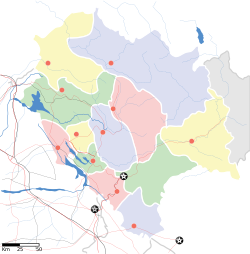

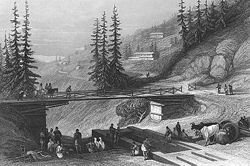


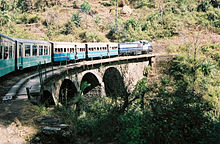

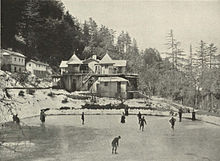
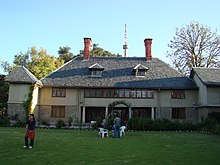





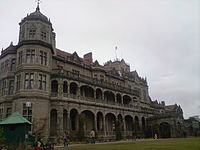


















No comments:
Post a Comment